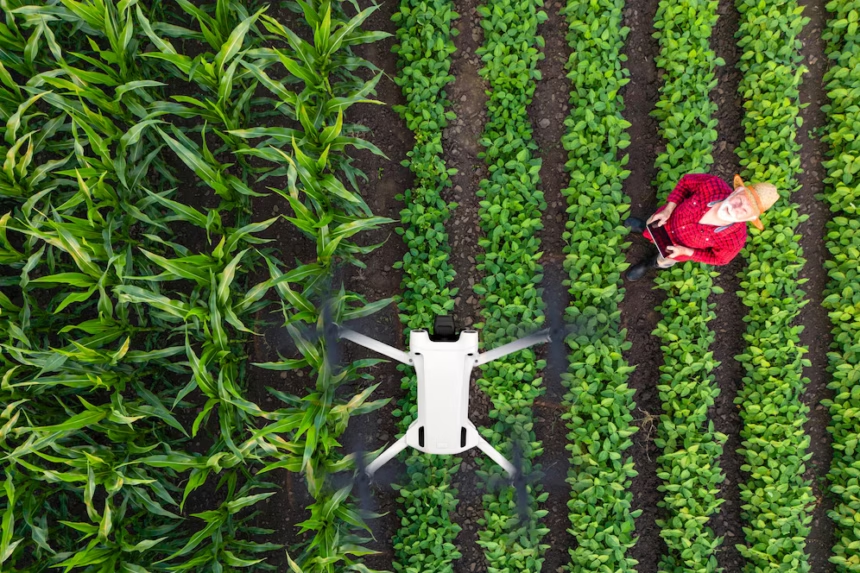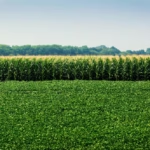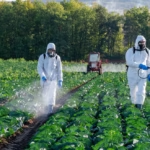The agricultural industry is under increasing pressure to produce more food to meet the demands of a growing global population. Traditional methods of predicting crop yields, such as historical data analysis and expert forecasts, are no longer sufficient to keep pace with modern challenges like climate change, pest outbreaks, and water scarcity. However, advancements in Artificial Intelligence (AI) are revolutionizing crop yield predictions, offering farmers powerful tools to optimize production, improve decision-making, and ultimately increase food security.
In this article, we explore how AI is improving crop yield predictions and the various ways this technology is transforming the agricultural sector for the better.
What is AI in Agriculture?
Artificial Intelligence in agriculture refers to the application of machine learning (ML), deep learning, and other AI technologies to automate tasks, analyze vast amounts of data, and make predictions or recommendations. These tools enable farmers to monitor crop health, optimize irrigation systems, detect pests, and predict crop yields with a level of precision previously unattainable.
AI algorithms process data from multiple sources—such as satellite imagery, weather forecasts, soil sensors, and historical crop performance records—to provide actionable insights and forecasts. The ability to predict crop yields accurately can help farmers manage risks, reduce losses, and improve profitability.
The Importance of Accurate Crop Yield Predictions
Crop yield predictions are crucial for several reasons:
- Supply Chain Management: Accurate predictions help stakeholders along the agricultural supply chain—from farmers to distributors—plan production, logistics, and storage efficiently.
- Resource Allocation: Predicting yields helps allocate resources like water, fertilizers, and labor more effectively.
- Market Decisions: With precise yield forecasts, farmers can make better decisions about pricing and marketing their crops.
- Risk Management: By anticipating poor or bountiful harvests, farmers can plan for challenging weather conditions, pest invasions, or potential crop failures.
Traditionally, predicting crop yields was based on historical data and expert judgment. However, these methods have limitations, especially in a world where weather patterns are increasingly unpredictable due to climate change. AI has stepped in to fill this gap, enabling more accurate, real-time predictions that are continuously refined with new data.
How AI is Improving Crop Yield Predictions
1. Leveraging Big Data and Remote Sensing
AI excels at processing and analyzing big data—large sets of data that can include weather conditions, satellite imagery, soil moisture levels, temperature patterns, and crop health indicators. Remote sensing technologies, such as satellite imaging, drones, and sensor networks, capture high-resolution data about crop fields, which AI systems then analyze to detect patterns and trends.
For example:
- Satellite imagery provides real-time updates on crop growth stages and health. AI algorithms can analyze this data to assess factors like canopy cover, leaf area index, and chlorophyll content—indicators that are highly correlated with crop yield.
- Drones equipped with sensors can capture data at a granular level, providing insights into specific sections of a field. This detailed data allows for precise crop yield predictions on a micro-level, helping farmers target areas with higher or lower yields.
By combining remote sensing with AI, farmers can track crop health in real-time, detect stress factors early, and make more accurate yield forecasts based on current field conditions.
2. Weather Prediction and Climate Modeling
Weather plays a crucial role in crop growth, and AI’s ability to analyze large datasets of historical and real-time weather data has made it a game-changer in predicting crop yields. Traditional methods often relied on generic seasonal weather patterns to estimate how much rain or sun a crop might receive, but AI can make highly specific forecasts.
AI algorithms integrate climate models and weather forecasting data to predict how various weather conditions (temperature, rainfall, humidity, etc.) will impact crop growth and yield. By factoring in long-term climate trends and immediate weather patterns, AI can provide farmers with more precise predictions, helping them plan better for droughts, excessive rainfall, or unseasonably cold weather.
3. Soil Health and Fertility Monitoring
Soil is one of the most critical factors in determining crop yield. AI is helping farmers optimize soil health by analyzing data from soil sensors that measure factors such as pH levels, nutrient content, moisture, and temperature. These sensors provide real-time information that is fed into AI models to predict how soil conditions will impact yield.
For example, AI can:
- Analyze soil fertility and recommend the right types of fertilizers based on nutrient deficiencies.
- Predict the effects of soil erosion on crop yields and suggest ways to mitigate it.
- Determine optimal planting depths and irrigation schedules based on soil moisture data.
By optimizing soil management practices, AI helps improve crop yields by ensuring that plants grow in the best possible conditions.
4. Machine Learning for Predictive Analytics
One of the most powerful ways AI is improving crop yield predictions is through machine learning (ML)—a subset of AI that allows systems to learn from data without explicit programming. ML algorithms analyze historical yield data, weather patterns, pest incidents, and soil conditions to build predictive models. Over time, these models become more accurate as they are fed more data.
Machine learning can be applied to:
- Predict potential crop diseases based on past outbreaks and environmental factors.
- Identify early signs of pest infestations, enabling farmers to take preventive measures before significant damage occurs.
- Predict harvest times and yield volumes by analyzing growth rates and weather conditions.
By continuously improving the models with new data, machine learning can provide highly reliable yield predictions, helping farmers plan production and market strategies more effectively.
5. Precision Agriculture and Variable Rate Technology (VRT)
AI plays a central role in precision agriculture, which involves optimizing farming practices on a field-by-field or even plant-by-plant basis. Variable Rate Technology (VRT) enables farmers to apply inputs (such as water, fertilizers, and pesticides) precisely where they are needed, reducing waste and improving efficiency.
AI-driven systems analyze data from GPS, remote sensors, and other sources to optimize irrigation schedules, fertilization, and pest control. This not only improves yields but also reduces costs and environmental impact by applying inputs only in the areas that need them most.
Real-World Applications of AI in Crop Yield Predictions
Several companies and startups are already integrating AI to help farmers make better predictions and improve yields:
- Climate Corporation: This company uses AI and machine learning to provide detailed weather forecasts, soil analysis, and crop yield predictions. Their platform helps farmers make data-driven decisions about planting, irrigation, and harvesting.
- IBM Watson Decision Platform for Agriculture: IBM uses AI and blockchain technology to gather data from sensors, satellites, and other sources. The platform provides real-time predictions about crop yields, pest outbreaks, and climate change impacts.
- John Deere’s FieldConnect: John Deere uses AI-powered sensors on their equipment to collect data about soil moisture, temperature, and crop health. This data is analyzed to improve precision farming practices and provide better yield predictions.
Challenges and Future Potential
While AI has tremendous potential to revolutionize crop yield predictions, there are challenges to overcome:
- Data Quality: The accuracy of AI predictions depends heavily on the quality and quantity of data. Inconsistent or incomplete data can lead to inaccurate forecasts.
- Technology Adoption: Many smallholder farmers in developing regions may lack the resources or knowledge to implement AI-driven solutions.
- Cost: Advanced AI systems can be expensive to implement, especially for farmers with limited capital.
Despite these challenges, the future of AI in crop yield predictions is bright. As technology advances and becomes more accessible, AI-driven solutions will continue to help farmers increase efficiency, improve sustainability, and produce more food with fewer resources.
AI is revolutionizing the way farmers predict crop yields, providing them with real-time, data-driven insights that lead to better decision-making and more efficient farming practices. By leveraging AI, farmers can optimize resources, reduce waste, and improve food security on a global scale. As AI technology becomes more widespread and accessible, it will play a central role in shaping the future of agriculture—one that is smarter, more sustainable, and more resilient to the challenges posed by climate change and a growing population.








